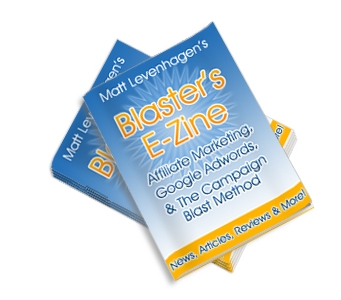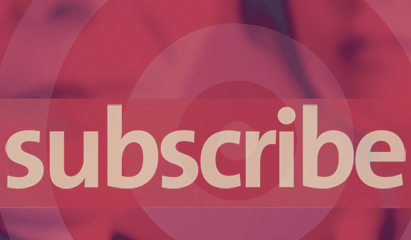
Avoid the pain
Which would you prefer – root canal dental surgery without an anaesthetic or a bit of public speaking? According to the people who research these things, most of us would prefer the former.
Public speaking is still one of our greatest fears and it turns grown men and women into nervous wrecks. The mere thought of it turns our tongue to cotton wool, causes our internal plumbing to act up and our kneecaps to start knocking lumps out of each other.
The problem is that Public Speaking catches up with many of us at some time both in our business and personal life. You’re asked to do a short talk at Fred’s “leaving do”. The
organisers of your business club want fifteen minutes on why you make “kafuffle” valves. A potential client wants a presentation on why they should give you the contract.
Of course there’s always the confident people who think “I’m real good at this, lead me to the podium.” The only thing is that some of these people could bore your socks off and do more for insomniacs than the strongest sleeping pills.
Maybe you’ll be lucky enough to be sent on a Public Speaking course by your enlightened employer. But more likely, when asked to make a presentation you’ll get hold of a book on
speaking, start writing the speech and lose sleep until the event.
Well, there’s no need for all of this because help is at hand. All you need to remember are your P’s and Q’s. Let’s start with the P’s
Preparation –
When you sit down to write what you’re going to say, bear in mind who you’ll be speaking to. Will they understand what you’re talking about; will they understand the technical stuff and the jargon? If in doubt remember the old saying “Keep It Simple Stupid”. To quote Aristotle – “Think as the wise men do, but speak as the common man”.
Make sure that what you say has a beginning, a middle and an end. Think of some anecdotes that help reinforce your story.
People think visually so paint verbal pictures for your audience. And always remember, people want to know what’s in it for them – so make sure you tell them!
Place –
Have a look at the venue before the event if you can. It’s not always possible, however, even if you get there half an hour before, you can check out where you’ll be speaking.
Stand at the point where you will deliver from, imagine where the audience will be and check that they can see and hear you. You may even wish to place a glass of water where
you’ll be able to find it.
Personal Preparation –
Before any speaking event, think about what you are going to wear; when in doubt dress up rather than down. You can always take things off for a more casual look. Men could remove their jacket and their tie. Women could remove items of jewellery.
Part of your personal preparation should include some mouth and breathing exercises. Practise saying some tongue twisters to give your speaking muscles a good work out. Take
a deep breath and expand your diaphragm. Then breathe out, counting at the same time, try and get up to fifty and not pass out.
As part of your personal preparation, write your own introduction. Write out exactly what you want someone to say about you, large font, double-spaced and ask the person
introducing you to read it. Believe me they won’t object and will probably be pleased and impressed.
Poise and Posture –
Whenever you’re called to speak, stand up or walk to the front quickly and purposefully. Pull yourself up to your full height, stand tall and look like you own the place. Before you start to speak, pause, look round your audience and smile. You may even have to wait until the applause dies down. Remember, you want the audience to like you, so look likeable. Practise this in front of a mirror or your family; I’ve heard that children make pretty good critics.
Pretend –
I’m suggesting you pretend you’re not nervous because no doubt you will be. Nervousness is vital for speaking in public, it boosts your adrenaline, which makes your mind sharper and gives you energy. It also has the slight side effect of making you lighter through loss of body waste
materials. The trick is to keep your nerves to yourself. On no account tell your audience your nervous, you’ll only scare the living daylights out of them if they think you’re going to faint. Some of the tricks for dealing with nerves are:
Get lots of oxygen into your system, run on the spot and wave your arms about like a lunatic. It burns off the stress chemicals. Speak to members of your audience as they come in or at some time before you stand up. That tricks your brain into thinking you’re talking to some friends. Have a glass of water handy for that dry mouth. Stick cotton wool on your kneecaps so people won’t hear them knocking.
One word of warning – do not drink alcohol. It might give you Dutch courage but your audience will end up thinking you’re speaking Dutch.
The Presentation –
This is it, the big moment when you tell your audience what a clever person you are and have them leap to their feet in thunderous applause. Okay, let’s step back a bit – if you want their applause then you’re going to have to work for it. Right from the start your delivery needs to grab their attention.
Don’t start by saying – “Good morning, my name is Fred Bloggs and I’m from Bloggs and Company.” Even if your name is Bloggs, it’s a dead boring way to start a presentation. Far better to start with some interesting facts or an anecdote that is relevant to your presentation.
Look at the audience as individuals; I appreciate that this can be difficult when some of them are downright ugly. However it grabs their attention if they think you’re talking to them individually.
Talk louder than you would normally do, it keeps the people in the front row awake and makes sure those at the back get the message. Funnily enough, it’s also good for your nerves.
PowerPoint –
And for those of you who haven’t heard of it, it’s a software programme that’s used to design stunning graphics and text for projection onto a screen. As a professional speaker, I’m not that struck on PowerPoint. I feel that too many speakers rely on it and it takes over the presentation. After all, you’re the important factor here. If an audience is going to accept what you say then they need to see the whites of your eyes. There needs to be a big focus on you,
not on the technology.
Use PowerPoint if you want but keep it to a minimum and make sure you’re not just the person pushing the buttons.
Why not get a bit clever at using the faithful old Flip Chart, lots of professionals do.
Passion –
This is what stops the audience in their tracks. This is what makes them want to employ you; to accept what you’re proposing and make them want you to marry their son or daughter. Couple this with some energy, enthusiasm and emotion and you have the makings of a great public speaker.
Just think of our old friend Adolph Hitler, boy could he move an audience to action. It’s just too bad he was selling something that wasn’t to everyone’s liking.
Give your presentation a bit of oomph and don’t start telling me – “I’m not that kind of person.”
There’s no need to go over the top but you’re doing a presentation to move people to action, not having a cosy little chat in your front room.
That’s the P’s finished with so let’s look at the Q’s.
Questions –
Decide when you’re going to take them and tell people at the start. In a short speech it’s best to take questions at the end. If you take them as you go then you may get waylaid
and your timing will get knocked out.
Never – never – never finish with questions; far better to ask for questions five or ten minutes before the end. Deal with the questions and then summarise for a strong finish.
Too many presentations finish on questions and the whole thing goes a bit flat.
When you’re asked a question, repeat it to the whole audience and thank the questioner. It keeps everyone involved, it gives you time to think and it makes you look so clever and in control.
Quit –
Quit when you’re ahead. Stick to the agreed time; if you’re asked to speak for twenty minutes, speak for nineteen and the audience will love you for it. Remember, quality is not quantity.
One of the most famous speeches ever – “The Gettysburg Address”, by President Lincoln, was just over two minutes long.
Right, that’s my cue to quit when I’m ahead. Public Speaking will never be easy for most of us but we can all do it a whole lot better.
 Alan Fairweather, ‘The Motivation Doctor,’ is an International Speaker, Author and Business Development Expert. To receive your free newsletter and free e-books, visit: http://www.themotivationdoctor.com
Alan Fairweather, ‘The Motivation Doctor,’ is an International Speaker, Author and Business Development Expert. To receive your free newsletter and free e-books, visit: http://www.themotivationdoctor.com


 Terri Zwierzynski is a self-employed business strategist and marketing consultant to solo entrepreneurs, and a grassroots promoter of the solo entrepreneur lifestyle. She runs
Terri Zwierzynski is a self-employed business strategist and marketing consultant to solo entrepreneurs, and a grassroots promoter of the solo entrepreneur lifestyle. She runs 
